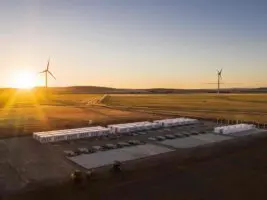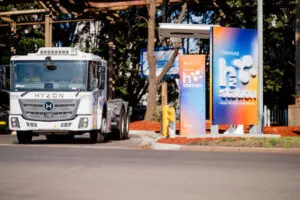ASX-listed gas junior Pilot Energy says feasibility studies have confirmed “significant opportunity” to develop a large-scale hydrogen production project using gas and novel carbon capture and storage (CCS) technology first, and renewables later, in Western Australia’s mid-west region.
Pilot said in a statement on Monday that the studies, commenced last year, aimed to assess the economic and logistical feasibility of developing a large-scale “clean” – but certainly not green – production project using the company’s existing oil and gas production operations.
Broadly, the company said the results showed Pilot was “well positioned to play a significant role in the energy transition through harnessing the world-class CCS and renewable resources of the Mid West region of Western Australia.”
More specifically, the studies found that the existing Cliff Head Oil Field offshore facilities, wells and pipelines were already suitable for CCS to the tune of 6.4 million tonnes of CO2 at an injection rate of 500,000 tonnes of CO2 per annum.
Pilot holds a 21.25% interest in the Cliff Head Oil Field through its 50% ownership of Triangle Energy, the operator of the Cliff Head Oil Field. The CCS and blue hydrogen feasibility study is being jointly funded by Pilot, APA Group and Warrego Energy.
Pilot said that the feasibility studies also highlighted the Mid West region could produce “clean ammonia” on a globally competitive basis for export into emerging Asian clean energy markets.
The company said the next steps would be to progress into the permitting and approvals process and front-end engineering and design for a staged development of commercialising CCS and blue hydrogen leveraging technology from US cleantech firm 8 Rivers.
8 Rivers Capital has been working on development of gas plants in the US using the proprietary technology of a company called Net Power, of which it is a co-owner, that burns natural gas with pure oxygen instead of air, producing only CO2 and water as byproducts. Excess CO2 is captured, “pipeline-ready,” for underground storage.
This will no doubt please the federal Morrison government, which as Pilot notes has prioritised CCS in its Technology Investment Roadmap, in the hope that CO2 compression, transport and storage can meet a “stretch target” of under $20 per tonne.
But whether this counts as “clean hydrogen” production is highly questionable, particularly after factoring in the emissions along the gas exploration and production life cycle.
Increasingly, the true “colour” of hydrogen, particularly in the export market, will determine its competitiveness in the market, with a premium being placed on renewables derived green hydrogen as businesses and governments reach for ambitious climate targets.
Still, Pilot Energy chair Brad Lingo welcomed the results of the studies, saying they outlined a clear multi-stage development path, starting with CCS and “building off this platform,” to produce clean power and hydrogen for domestic use and for export, as low-cost “clean” ammonia.
“This staged development path is very much in the reach of the company in terms of financial capacity and technical delivery taking advantage of the existing Cliff Head Oil Field infrastructure and operations,” Lingo said.
“The Company is very focused on delivering a First-to-Market CCS Project in the Mid West to anchor the further development of a Clean Hydrogen/ Ammonia and Renewable Energy Project.
“We are very much focused on engaging with NOPTA and the other relevant regulators to secure the necessary approvals to implement this project with an aim of having the first stage of the development pathway operational by 2025 and generating positive cash flow from these operations as well as delivering a material impact on carbon emissions in the Mid West,” he said.










